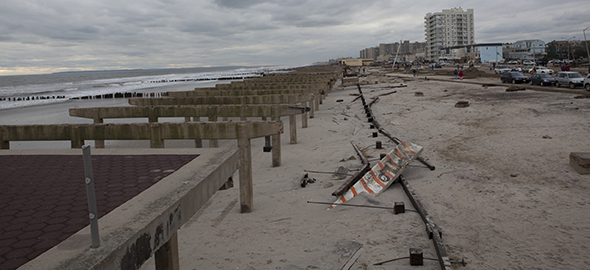DeGeorge Development Inc. specializes in providing professional house lifting services in New Jersey. House lifting is a complex and carefully executed process that involves elevating an entire house or building for various crucial reasons, including flood mitigation, foundation repair, and creating additional living space.
House Lifting Is Vital For Several Reasons, And Here In New Jersey, It Serves Specific Purposes:
Flood Mitigation: New Jersey is no stranger to flooding, and house lifting can safeguard your property against the devastating effects of floods. Elevating your home above the base flood elevation (BFE) reduces the risk of damage, lowers insurance premiums, and ensures the safety of occupants.
Foundation Repair: If your home has a damaged or deteriorating foundation, lifting is often the most effective way to access and repair it properly. This includes repairing or replacing damaged footings, piers, or foundation walls.
Additional Living Space: House lifting can create valuable additional living space underneath your elevated house. Whether it’s for parking, storage, or a finished living area, we ensure compliance with local building codes and regulations.
Structural Improvements: House lifting becomes necessary when addressing structural issues like termite damage, rot, or sagging floors. By elevating the house, we can efficiently repair or replace damaged components to ensure long-term stability.

House raising NJ
Meeting Building Codes: As building codes and regulations change over time, lifting your house may be necessary to ensure that your existing structure complies. This is particularly crucial for adhering to updated requirements like height restrictions and flood zone regulations.
Improved Views: In scenic areas of New Jersey, raising your house can enhance your views, allowing you to enjoy the beautiful landscape from an elevated perspective.
Our commitment to house lifting is crucial for a variety of reasons, including flood protection, cost savings, and preserving historic homes, especially in a state like New Jersey with its diverse landscape and potential flood risks.
House Lifting In New Jersey Is A Comprehensive Process, And We Ensure Each Step Is Meticulously Executed:
Site Assessment: We start by evaluating the property, ensuring it’s structurally sound and suitable for lifting. This assessment takes into account the existing foundation, soil conditions, utilities, and local building regulations.
Permitting: Obtaining the necessary permits and approvals from local authorities is a crucial step, involving compliance with building codes, zoning regulations, and environmental guidelines.
Foundation Preparation: We prepare the existing foundation, which may include excavation, shoring up the structure, and disconnecting utilities.


Example of a House Being Lifted in New Jersey
House Elevation: The house undergoes a precise lifting process using hydraulic jacks or dedicated equipment, guaranteeing a gradual and stable increase in its height.
Support Structure Setup: We install a fresh support structure, such as pilings or an elevated foundation, underneath the house to serve as its new foundation.
Precise Leveling: The house is carefully and thoroughly leveled to ensure evenness and stability at its new elevation, with adjustments made to supports as necessary.
Reinforcements: Additional reinforcements are added, depending on the project’s requirements.
Utilities Reconnection: Plumbing, electrical, and HVAC systems are reconnected to the house.
Backfilling: The area around the new foundation is backfilled, and the landscape is restored.
Final Inspection: Local authorities may conduct a final inspection to ensure compliance with all relevant building codes and regulations.
Renovation and Final Touches: All required repairs, enhancements, and upgrades are carried out both internally and externally, getting the house ready for occupation. House lifting is a specialized procedure, and our proficient team, comprising engineers, contractors, and construction specialists, guarantees the project’s safety and efficiency while adhering to all relevant local building and safety regulations.
When you opt for DeGeorge Development, rest assured that your New Jersey house lifting requirements will be addressed with the utmost professionalism and expertise.
Hurricane Sandy & House Lifting
Hurricane Sandy, which struck the East Coast of the United States in October 2012, had a significant impact on New Jersey and subsequently played a crucial role in the development and implementation of house lifting practices in the state. Here’s how Hurricane Sandy relates to house lifting in New Jersey:


Hurricane Sandy
Increased Awareness of Flood Risks: Hurricane Sandy caused widespread flooding along the New Jersey coast, affecting numerous homes and communities. This event served as a stark reminder of the vulnerability of coastal and low-lying areas to storm surges and flooding.
Rising Sea Levels: The storm surge from Hurricane Sandy was exacerbated by rising sea levels, which have been attributed to climate change. This highlighted the long-term risks of coastal properties and the need for adaptive measures.
Government Initiatives: In the wake of Hurricane Sandy, both federal and state governments initiated programs to enhance resilience against future storms and flooding. These initiatives often included incentives and funding for house lifting and other flood mitigation measures.
Flood Insurance Requirements: To access federal flood insurance, homeowners in flood-prone areas are required to comply with specific floodplain management regulations. House lifting is one of the methods that can bring homes into compliance with these regulations.
Mitigation and Preparedness: House lifting became an essential strategy for mitigating flood risks and enhancing the resilience of New Jersey’s coastal communities. The process helps protect homes and structures from the damaging effects of floods and storms.
Local Building Codes and Zoning Regulations: Many New Jersey municipalities updated their building codes and zoning regulations to include higher base flood elevations (BFE) after Hurricane Sandy. House lifting is often necessary to ensure that existing structures meet these revised requirements.
Community Resilience: By implementing house lifting and other flood mitigation measures, New Jersey communities have taken steps to become more resilient in the face of future storms. This approach not only safeguards homes but also helps maintain the social fabric of these communities.
